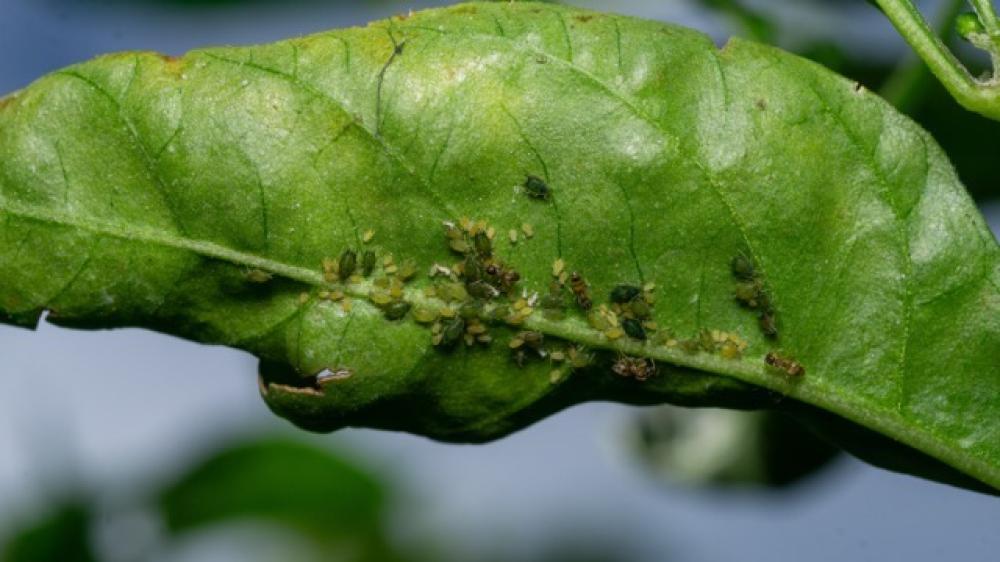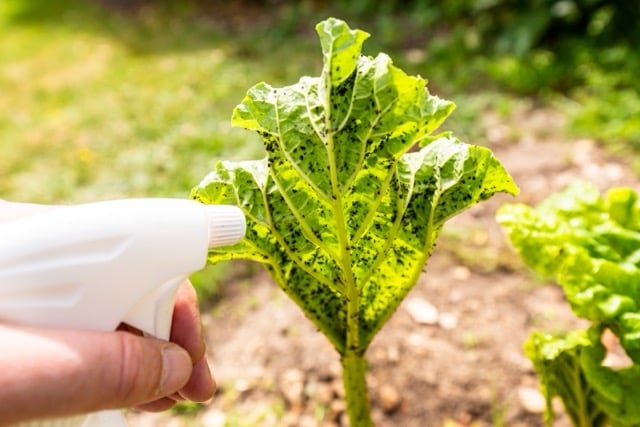
- Aphids are one of the most widespread and dangerous insects to agricultural crops. They are small, soft-bodied insects that feed on plant sap by sucking it from leaves and stems. They reproduce rapidly in warm conditions, forming dense colonies on tender leaves and growing tips. Aphid infestations not only weaken plants but also transmit many viral diseases, making them even more dangerous.
Forms and symptoms of infection
- 🌱 The presence of colonies of small green, yellow, or black insects on the stem and lower surface of the leaves.
- 🍂Wrinkling and yellowing of leaves and poor growth due to sap absorption.
- 🌸 Delayed flowering and weak fruit set in fruit-bearing plants.
- 🍯 Secretion of a sticky honeydew substance that attracts ants and helps black mold grow.
- 🦠 Transmission of serious viral diseases that lead to crop deterioration.

economic damage
- Reduced vegetative growth and poor production.
- Fruit deformity and small size.
- Spread of viral diseases transmitted by aphids.
- Heavy production losses may reach 25–40% in severe cases.
Prevention methods
- 🌿 Remove weeds because they are a host for aphids.
- ✂️ Prune and dispose of infected parts early.
- 🐞 Maintain natural enemies such as ladybugs and lacewings that prey on this insect.
- 💧 Moderation in nitrogen fertilization and irrigation to reduce the activity and spread of aphids.
Active ingredients to combat aphids
- Imidacloprid
- Usage rate: 0.25–0.5 ml per 1 liter of water.
- Frequency: Every 14 days.
- Acetamiprid
- Usage rate: 0.3–0.5 ml per 1 liter of water.
- Frequency: Every 14–21 days.
- Thiamethoxam
- Usage rate: 0.3–0.6 ml per 1 liter of water.
- Frequency: Every 14 days.
- Pirimicarb
- Usage rate: 0.5–0.75 g per 1 liter of water.
- Frequency: Every 10–14 days.
- Pymetrozine
- Usage rate: 0.5–0.75 ml per 1 liter of water.
- Frequency: Every 14 days.
Practical tips for farmers
- Start control as soon as the first colonies appear and do not wait until they spread.
- Alternate between different active ingredients to avoid developing resistance in the insect.
- Focus on biological control along with chemical control.
- Focus on the underside of the leaves when spraying because this is the preferred location for aphids.
Diagnosis
- Periodically inspect the lower leaves for small colonies.
- Noticing a large number of ants may indicate the presence of aphids due to honeydew.
- Monitor weak or stunted plants as they are most susceptible to infection.

